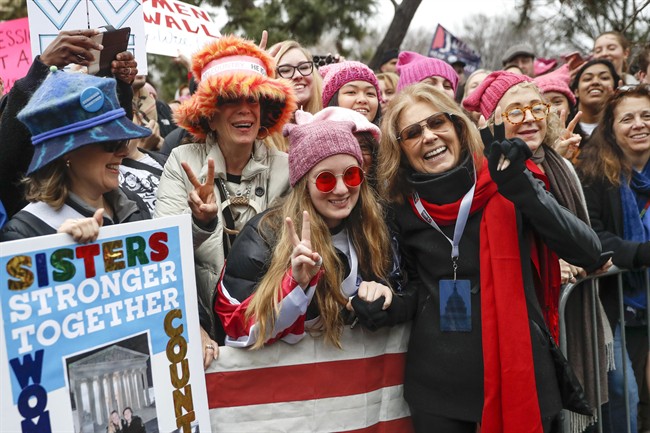OTTAWA – Statistics Canada says that more women are in leadership roles in the public sector where pay equity is the law than in the private sector, where similar rules don’t apply.

The report from the national statistics office released on International Women’s Day says that gender parity existed in the public sector in 2015, when 54 per cent of legislators and senior government managers and officials were women.
The percentage of women in similar positions in the private sector was 25.6 per cent, the report says.
READ MORE: Here’s what Canadian women would be making in these jobs if they were men
The number of women in the workforce has risen considerably over the past 70 years, jumping rapidly between the 1950s and 1990, but rising at a slower pace since then.
As of 2014, women’s labour force participation reached 82 per cent, Statistics Canada says, compared with 91 per cent for men, narrowing a gap that was more than 70 percentage points in the early 1950s.
In 2015, just over half of Canada’s women worked in traditionally female occupations: teaching, nursing, social work, clerical positions, or sales and services, compared with 17.1 per cent of men — figures that have changed little over the last 30 years.
Women remain outnumbered in natural and applied science occupations that usually require a university degree.
READ MORE: Sophie Gregoire Trudeau’s muddled message: Men must be on board to improve women’s rights
As a result, women tended to occupy lower-paying jobs and earned less overall than men: Statistics Canada calculated that women earned 87 cents for every dollar earned by a man. Looking across 46 occupation groups, Statistics Canada found that women’s wages would rise on average by $2.86 per hour if men and women were paid equally.
The Liberals won’t move on pay equity legislation until 2018 at the earliest with the federal labour minister saying the law is more complicated than it sounds. Patty Hajdu said the government doesn’t want to impose burdens on employers.
In the meantime, the government is focusing on skills training targeting women who go into non-traditional fields, like the sciences and mining, and helping women who go into non-traditional jobs and leave because it is inhospitable for them to stay, Hajdu said.
- Trudeau says ‘good luck’ to Saskatchewan premier in carbon price spat
- Canadians more likely to eat food past best-before date. What are the risks?
- Hundreds mourn 16-year-old Halifax homicide victim: ‘The youth are feeling it’
- On the ‘frontline’: Toronto-area residents hiring security firms to fight auto theft














Comments